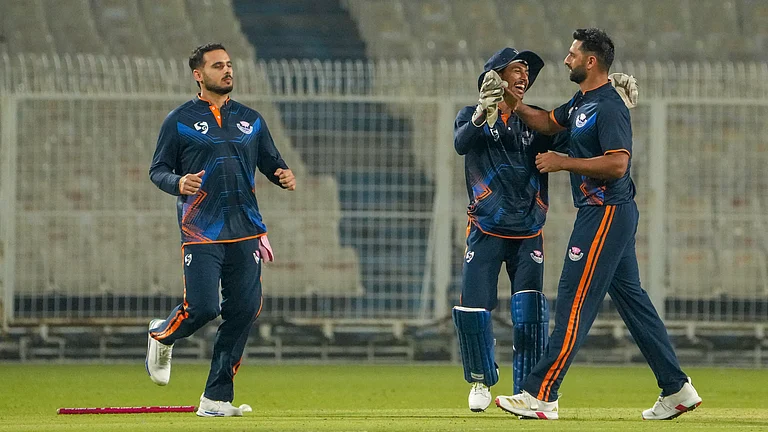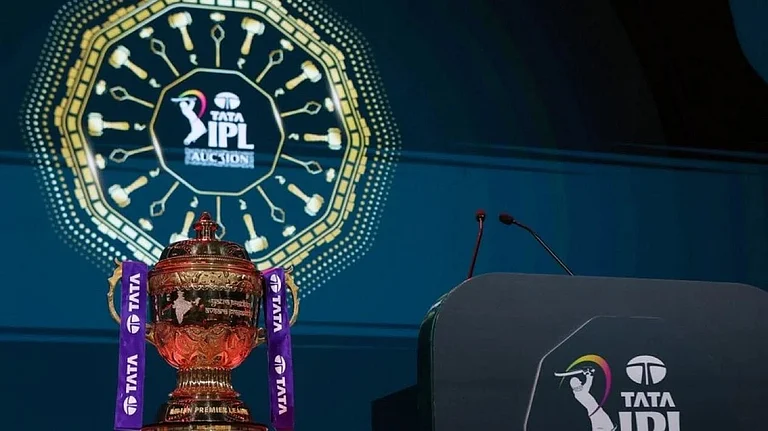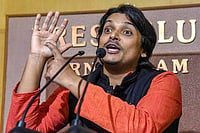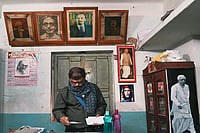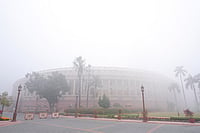WHAT may go down in contemporary history as the George Effect is the result of the fusion that took place between George Fernandes' naming of China as the principal threat to India, Pokhran-II, and the reasons given for nuclear testing and possible weaponising by the Prime Minister in his letter to President Clinton of May 12.
In short, the George Effect is the creation of so manifold and multi-dimensional a "threat" from our neighbour China, as to justify not only weaponisation, but also the adoption of two Rambo-type attitudes: that India would not hesitate to use these weapons if necessary, and that Pakistan should take note of the new geo-strategic realities in South Asia.
The George Effect was felt when the India-China dialogue was approaching a mutually agreeable Line of Actual Control (LAC), the first stage towards an eventual border settlement; when formal agreements to build military confidence and prevent accidental clashes had been signed in 1993 and 1996; when issues of concern—China's nuclear capability, its sale of missiles to Pakistan, its presence in Myanmar—could be raised at the frequent high-level meetings. After May 11, these concrete gains of a decade-long dialogue with China seemed to belong to a past era.
At home, the George Effect raises vital questions? Why test? Why weaponise? Why change the supporting argument from one of "discrimination" for the NPT and "unfair" and "not really comprehensive" for the CTBT, to the specifically narrow one of a Chinese threat? These related questions concern the making of foreign policy and the process and institutionalisation of policymaking. The remarkable skill and efficiency with which the nuclear tests were conducted has not been matched by an equal display of political and diplomatic acumen. Instead, statesmanship seemed to have been given a long vacation, and what the nation witnessed was a privatisation of policy-making. China-bashing, a la George, became the order of the day. The sobriety of MEA statements and of Brajesh Mishra's May 12 statement on the nuclear tests were tragically lost from sight.
The diplomatic fallout of the George Effect has been widespread, though India has gained uncomfortable support from the likes of Newt Gingrich and perhaps softer sanctions than may have been expected. Did we play the China card to exert influence on the eve of Bill Clinton's visit to China? Was it instrumental in influencing the vote in the House of Representatives that seeks to debar the sale of American space and missile-related technology to China? And if so, why? What did the government expect to gain from this while taking India-China relations to the brink of another confrontation? The point to note is that no statement or comment on China following Fernandes' views of May 3 kept the door open for limiting damage to this important relationship. Nor did they address such genuine concerns as our neighbours and the world might have. Not in a long time has the Indian political leadership been so maladroit in managing so critical an initiative.
The Chinese response escalated progressively from denying it posed a threat to India, to "serious concern" over the tests that it said were "detrimental to peace and stability in South Asia", to "strong condemnation" (after the PM's letter was leaked) and charges of Indian "hegemonic" ambitions in South Asia. From then on, unofficial Chinese commentaries referred not only to the nuclear tests and their regional and international consequences, but began to revert to that version of India's China and border policy that Beijing brings out whenever bilateral relations touch a dangerously low point. This is intended to serve as a warning that the relationship is in danger of becoming irredeemably confrontational. In keeping with Chinese style, however, the door has not yet been shut to a return to the path of non-confrontation.
From about May 20, the Indian government seems to have initiated what can be described as a strategy of damage limitation. Once again it is far from clear whether this has been thought through in all its detail, or who devised this strategy—if it is that—and who will be responsible for its patient implementation. Press briefings apparently advised curtailing the euphoria and the China-bashing. Senior retired diplomats were consulted and the ambassador to China was called in for talks. The stamp of official policy was provided by a high-level, three-pronged diplomatic foray. On May 19 during his visit to the site of Pokhran II, the prime minister called for an improvement in relations with China, thus announcing what Beijing should take to be firm government policy.
At a press conferences the next evening, Mishra, his influential principal secretary, gave concrete shape to this broad policy. Interestingly, he placed it in a nuclear context—namely, the announcement of a moratorium on testing and the willingness to transform this into a "formal obligation" by negotiating entry into the CTBT. To negate the earlier Rambo attitudes, he said India would not go to war with Pakistan and offered an unconditional no-first-strike guarantee. Then, coming to China, he said, "let us go back to the dialogue" and expressed government readiness to have "the best of relations with China". He however admitted that India has "some problems" with China and dismissed the recent hot exchanges as having cleared the air.
The third prong of this political foray was undertaken by L.K. Advani, incongruously clad in a dhoti in the high snows of Mana. He reaffirmed his government's strong commitment to a continuation of the India-China dialogue on the territorial issue. That he chose to visit Mana, in the middle sector of the border, may be symbolic. This sector is not involved in any major dispute, nor is it of primary strategic value.
Advani addressed only the bilateral issues in India-China relations. Regional and global issues, which also intrude on bilateral relations, were taken up by Mishra, who also made a definitive policy statement on China. This separation of the purely bilateral from the wider political issues must become an integral part of any attempt at damage limitation as it must also form part of future China policy. No longer must territorial issues be left hostage to sharp differences that India is likely to have with China in the immediate future over larger issues including weaponisation.
The Chinese statements and comments have insistently called upon India to not weaponise and on the international community to stop India from doing so. China will continue to do so even as it returns to the path of dialogue, slowly, as the George Effect is hopefully dissipated by remedial diplomacy.








